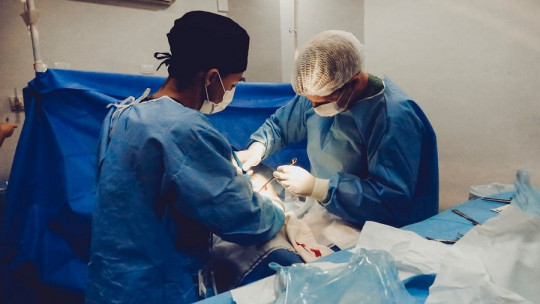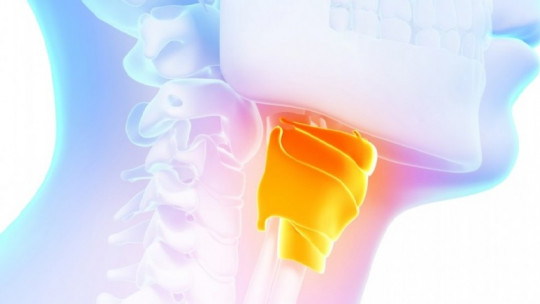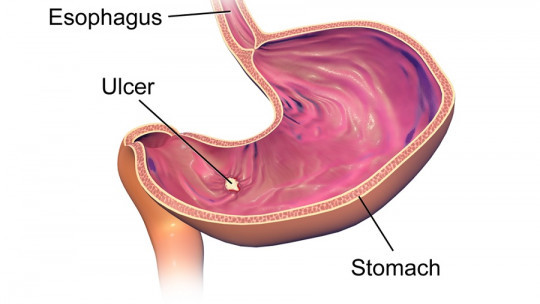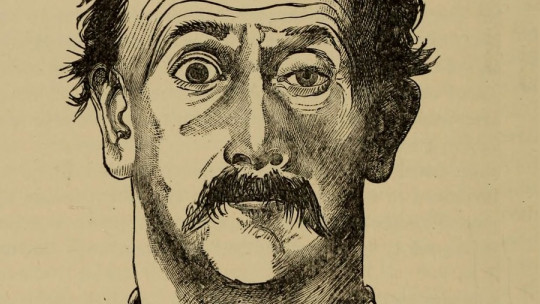In the form of sprays, gels, patches, injected… Local anesthesia is a type of intervention that can be done in multiple ways but in all of them it involves numbing a small region to avoid feeling pain.
Local anesthetics are used both at home, to treat a sore throat or gum discomfort, and in the offices of medical professionals, such as the dentist or dermatologist.
The mechanism of action of the drugs used in these procedures has the particularity that they affect the nerves, something that we are going to see in greater depth by looking at how local anesthesia works in summary.
How does local anesthesia work?
Local anesthesia consists of the use of drugs to temporarily numb a small part of the body This type of anesthesia is applied before performing a minor medical procedure, such as a skin biopsy, and also in the dentist’s office for the extraction of a tooth or application of a filling.
Unlike general anesthesia, local anesthesia does not put the patient to sleep , intervening in the nerves of the area where it has been applied. To understand how it works we must first review how the nervous system works in general.
As we already know, in the nervous system we find cells called neurons, which have a membrane with many channels that allow ions, electrically charged molecules, to pass through them. The ions that are involved in the transmission of the nervous impulse are mainly three: sodium (Na+), potassium (K+) and chlorine (Cl-).
When a stimulus hits a sensory cell, a nervous signal is produced This signal can be experienced in different ways, such as temperature, pressure or, related to today’s topic, pain.
For a nerve impulse to be generated, the electrical activation threshold of the neuron must be reached and, if it is reached, it will give rise to a process called depolarization.
When the neuron is at rest, its exterior is positive and its interior is negative This changes when a sufficiently intense stimulus is received, something that causes the membrane channels to open, introducing Na+ into the nerve cell and causing K+ to come out, in a ratio of 3 to 2. In this way, the interior of The neuron becomes more positive, allowing the action potential to occur and thus the nerve impulse to be transmitted.

Having understood this, what does it have to do with how local anesthesia works? The truth is that a lot, since the mechanism of action of local anesthetic drugs directly affects the ability of the neurons in the operated area to emit an impulse. Local anesthesia blocks the Na+ channels of the neuronal membrane, preventing this ion from entering the neuron and turning its interior positive Since the interior remains negative, depolarization cannot occur.
Local anesthesia prevents the depolarization of the neuron, which means that the area under the effects of this intervention cannot transmit sufficient signals and, therefore, no pain is noticed in the region.
Properties of these drugs
There are a variety of local anesthetics and, therefore, their properties vary, although they all have in common being slightly alkaline. Because of this, These drugs do not work very well in acidic environments such as inflammation or infection which is why they are not used in these medical conditions.
Chemically, local anesthetics are molecules made up of a lipophilic aromatic ring linked to a hydrophilic group through an intermediate bond that can be of the ester or amide type. It is precisely the type of bond that can be found in the anesthetic that causes it to receive one name or another, in addition to influencing the way the body metabolizes the substance.
Amide-type anesthetics are metabolized in the liver, while ester-type anesthetics are metabolized by pseudocholinesterases in the blood. Ester anesthetics, once metabolized, produce paraaminobenzoic acid as a metabolite, which can cause allergies in some people.
As a general rule, you can tell if a local anesthetic is from the ester group or the amide group by looking at its name In the case of amides, there is another “i” in their name apart from the one that forms the suffix -caine, such as lidocaine, mepivacaine, prilocaine or ropivacaine, while in esters there is only the “i” for -caine , as we can see in chloroprocaine, procaine, cocaine and benzocaine.
Types of local anesthesia
There are two main types of local anesthetics depending on how they are applied.
Topical anesthetics
Topical anesthetics are applied directly to the skin or mucous membranes, such as the inside of the mouth, nose, and throat. They can also be applied to the surface of the eye. Topical anesthetics are marketed and applied in multiple ways:
In some cases, the doctor may use a combination of local anesthetics to have a longer lasting effect long-term.
Examples of procedures in which topical local anesthesia is used include:
Most local anesthetics that we find in a pharmacy are topical composed of benzocaine in many cases, and are used to manage pain from:
- Teeth, gums or mouth ulcers
- Open wounds
- Sore throat
- Minor burns
- Poison ivy rash
- Bug bites
- Hemorrhoids
Injected anesthetics
Local anesthetics can be administered through injections. This type of anesthetics They are usually used for minor procedures in which it is necessary to numb the intervention area rather than for pain management Among the procedures where local anesthesia is injected we find:
- Dental intervention, such as root canal treatment.
- skin biopsy
- Removal of a growth under the skin
- Removal of moles or deep warts
- Pacemaker insertion
- Diagnostic tests such as lumbar puncture or bone marrow biopsy
The type of anesthesia required for the specific case will vary. depending on the particularities of the procedure and the patient’s own characteristics For example, in the case of cataract surgery, this type of intervention can be done with both topical and injected anesthesia. The doctor will determine the best type of anesthesia to apply based on the following factors.
- The duration of the procedure
- The size and location of the area that requires numbing
- If there is an underlying health condition that may affect the procedure
- Medication taken by the patient
How is it managed?
The patient does not have to do much while preparing to have local anesthesia administered; However, it is necessary that you inform the doctor or anesthetist of any inconvenience that could affect both the effectiveness of the local anesthetic and the possibility of side effects The information that the doctor should know about the patient before applying local anesthesia is:
- If there is any open wound near the affected area
- If you take any type of medication, especially anticoagulants
- If you have a bleeding disorder, such as hemophilia or Von Willebrand disease
The patient will receive local anesthesia shortly before starting the procedure, giving the anesthetic enough time to begin to take effect and perform the intervention while the numbness lasts.
The operation will most likely last a few minutes during which the patient should not notice any pain, although they may notice some sensations of pressure in the intervened area. If you notice pain, it will be necessary to apply a higher dose of the local anesthetic.
Local anesthesia is usually given for one hour, but the patient will notice slight numbness for a few more hours. As its effects fade, the patient may notice tingling and spasms It is advisable for the patient to be careful with the numb area, since as it is not so noticeable there is a greater chance of suffering an injury without realizing it.
- You may be interested: “The 6 types of anesthesia (with their effects and characteristics)”
Side effects of local anesthesia
Local anesthetics are generally safe and do not cause side effects , except for the tingling and small spasms that may be noticed in the numb area after the intervention. However, if a higher dose than normal has been administered, the injection has been made into a vein instead of tissue, or if the patient is simply more sensitive than average to the anesthetic, it is likely that symptoms will appear. the following side effects:
- Ringing in the ears
- Dizziness
- Numbness
- Spasms
- metallic taste
In extremely rare cases where there has been too much dose of local anesthesia administered the following effects can occur :
Seizures
- Low blood pressure
- Slowed heart rate
- Trouble breathing
An allergic reaction to the anesthetic is also possible, although this is rare and research suggests that Only 1% of the general population would be allergic to local anesthetics









